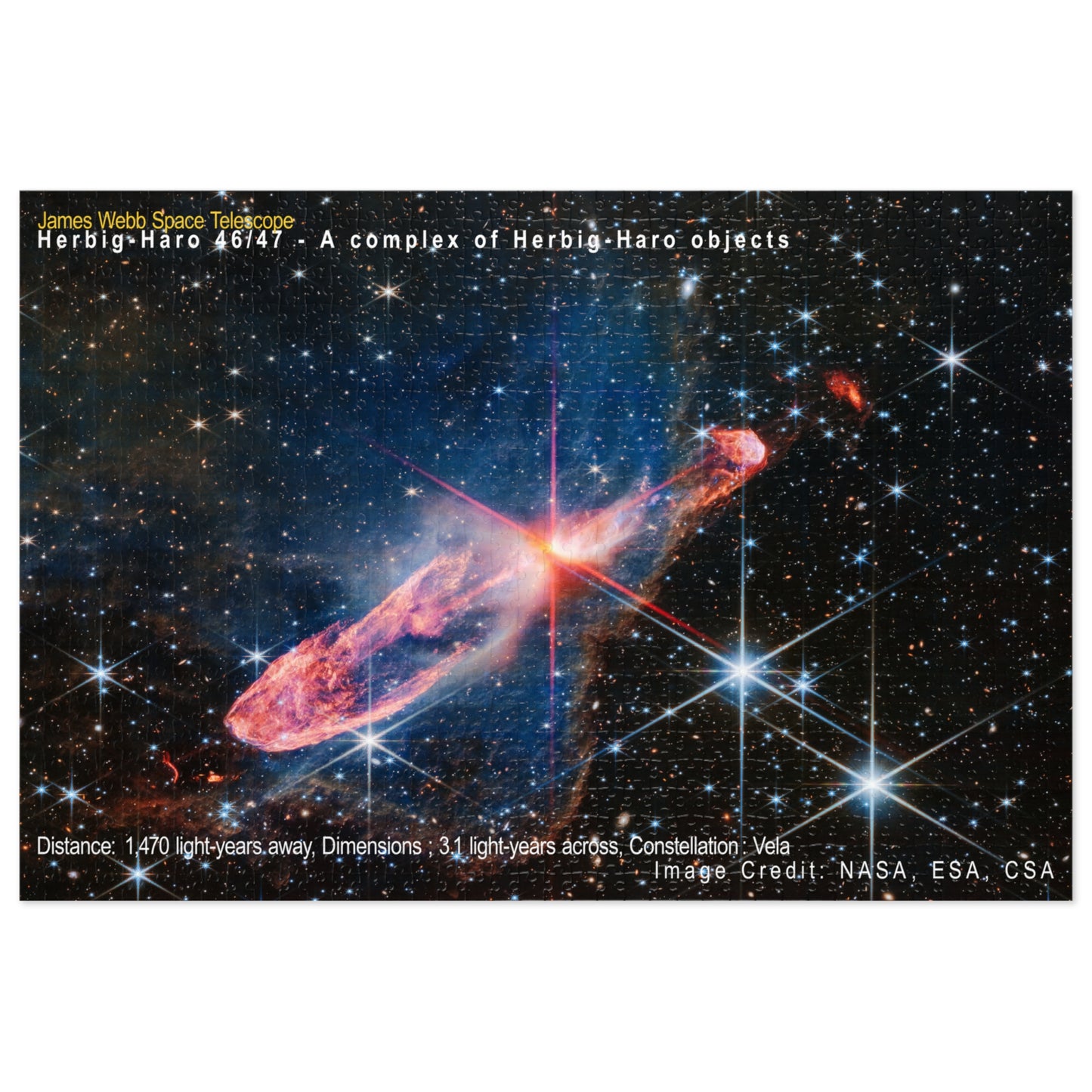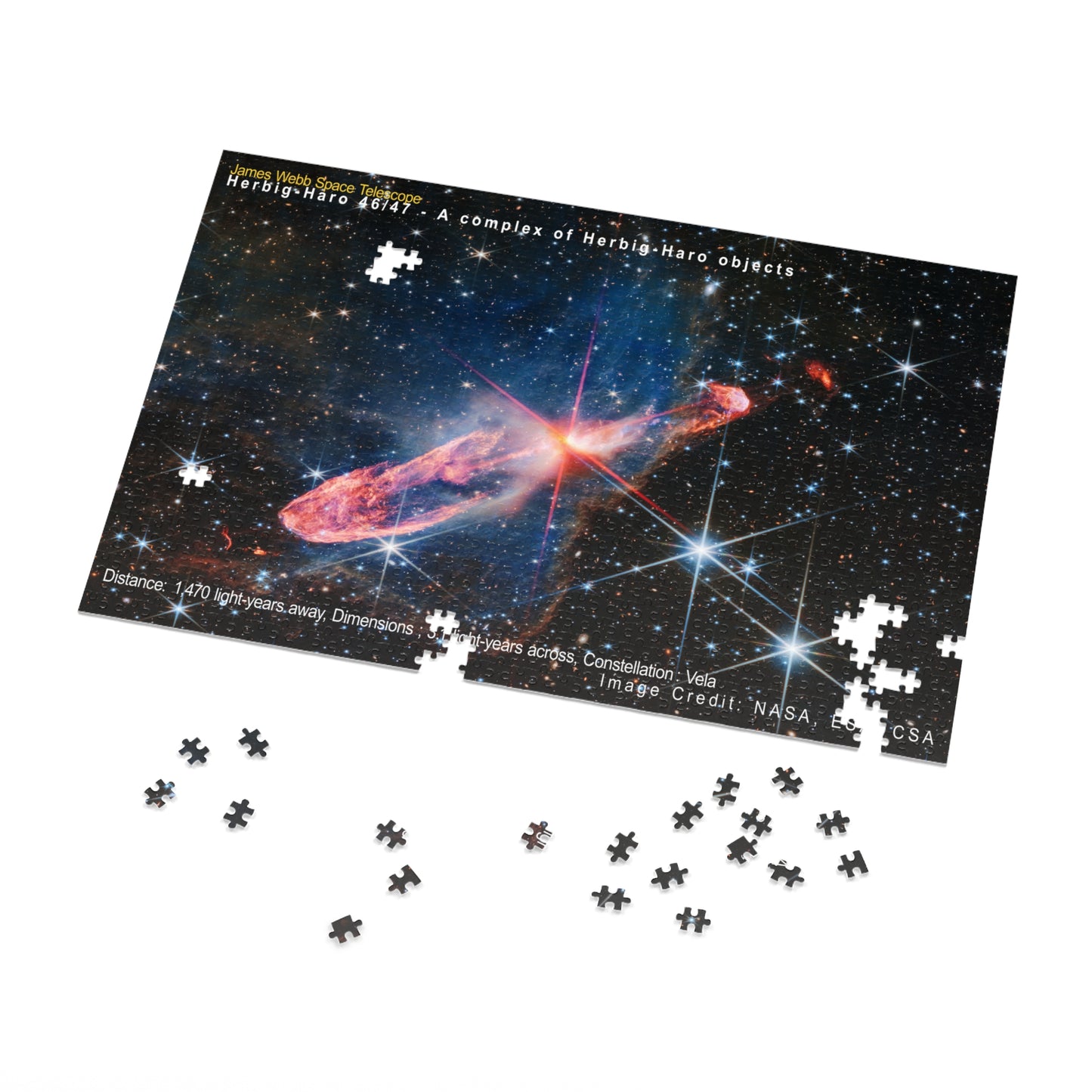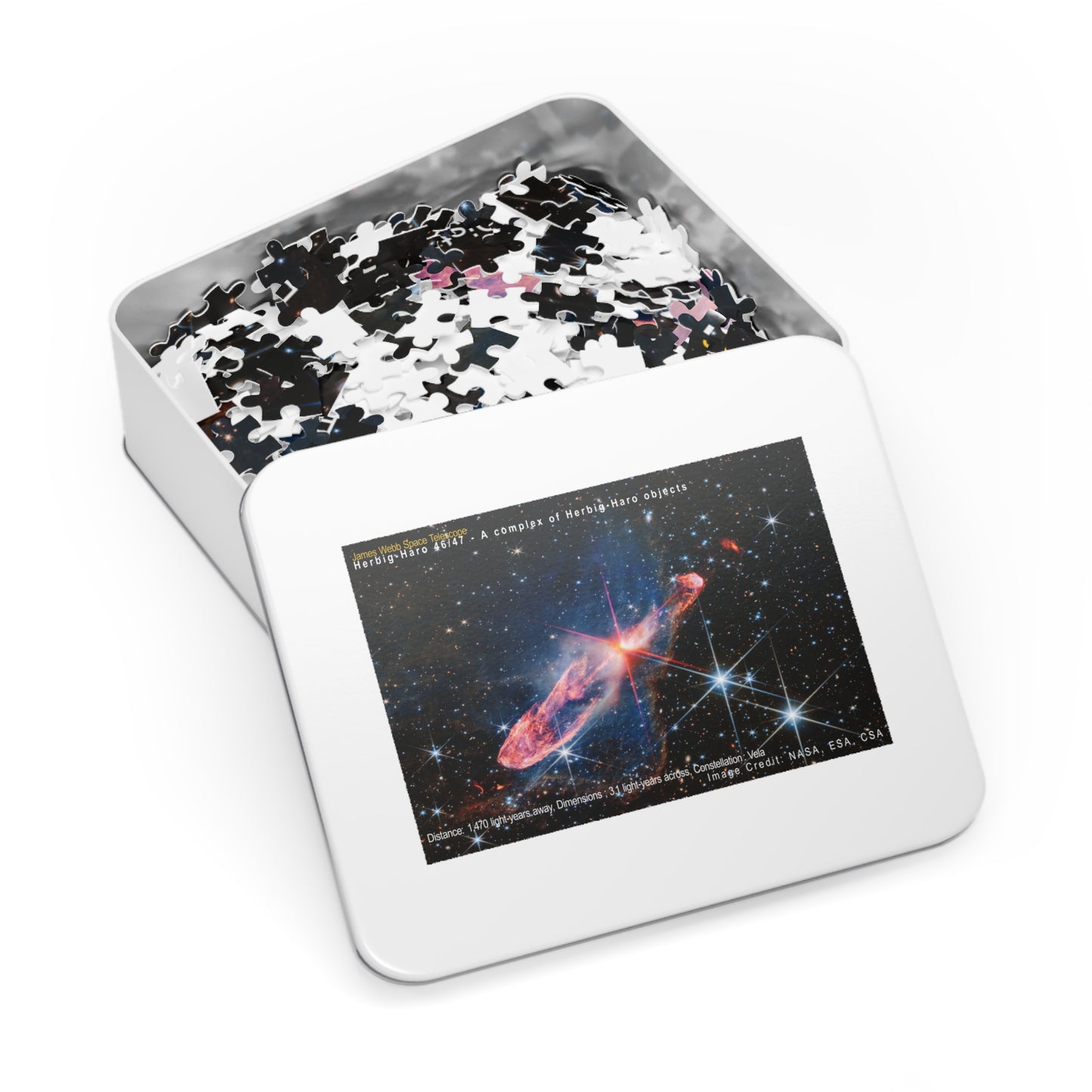Herbig-Haro 46/47, Jigsaw Puzzle
Herbig-Haro 46/47, Jigsaw Puzzle
Couldn't load pickup availability
Unveiling the Mysteries of the Cosmos: Dive Deep with Our Galaxy Puzzles!
Embark on a challenging and rewarding journey with stunning images.
A Universe of Wonder: Lose yourself in breathtaking views of distant galaxies, nebulae, and star clusters captured by the most powerful telescope ever built.
A Challenge Worthy of Any Stargazer: Choose from various puzzles to test your skills.
Sharpen Your Mind: As you piece together the cosmos, you'll develop problem-solving abilities, logical reasoning, and concentration.
Become an astronaut of the mind and explore the universe from the comfort of your home!
Herbig-Haro 46/47:
These stars have a lot of energy to let loose!
NASA's James Webb Space Telescope has captured a tightly bound pair of actively forming stars, known as Herbig-Haro 46/47, in high-resolution near-infrared light. Look for them at the center of the red diffraction spikes. The stars are buried deeply, appearing as an orange-white splotch. They are surrounded by a disk of gas and dust that continues to add to their mass.
Herbig-Haro 46/47 is a significant object to study because it is relatively young, with an estimated age of only a few thousand years. Stars take millions of years to fully form. Targets like this also provide researchers with insight into how stars accumulate mass over time, potentially allowing them to model how our own Sun, a low-mass star, formed.
The two-sided orange lobes were created by earlier ejections from these stars. The stars' more recent ejections appear in a thread-like blue, running along the angled diffraction spike that covers the orange lobes.
Actively forming stars ingest the gas and dust that immediately surrounds them in a disk (imagine an edge-on circle encasing them). When the stars "eat" too much material in too short a time, they respond by sending out two-sided jets along the opposite axis, slowing down the star's spin, and removing mass from the area. Over millennia, these ejections regulate the amount of mass the stars retain.
Don't miss the delicate, semi-transparent blue cloud. This is a region of dense dust and gas, commonly referred to as a nebula. Webb's crisp near-infrared image allows us to see through its gauzy layers, revealing a significant portion of Herbig-Haro 46/47, while also showcasing a deep range of stars and galaxies that lie far beyond it. The nebula's edges transform into a soft orange outline, like a backward L along the right and bottom.
The blue nebula influences the shapes of the orange jets shot out by the central stars. As ejected material rams into the nebula on the lower left, it takes on wider shapes because there is more opportunity for the jets to interact with molecules within the nebula. Its material also causes the stars' ejections to light up.
Over millions of years, the stars in Herbig-Haro 46/47 will fully form – clearing the scene.
Take a moment to linger on the background. A profusion of extremely distant galaxies dot Webb's view. Its composite NIRCam (Near-Infrared Camera) image is made up of several exposures, highlighting distant galaxies and stars. Blue objects with diffraction spikes are stars, and the closer they are, the larger they appear. White-and-pink spiral galaxies sometimes appear larger than these stars, but are significantly farther away. The tiniest red dots, Webb's specialty in infrared, are often the oldest and most distant galaxies.
Constellation: Vela
Dimensions: Image is 7.3 arcmin across (about 3.1 light-years)
Distance: 1470 light-years
Exposure Dates: May 24, 2023
Image Credit: NASA, ESA, CSA; Image Processing: Joseph DePasquale (STScI), Anton Koekemoer (STScI)
Share






